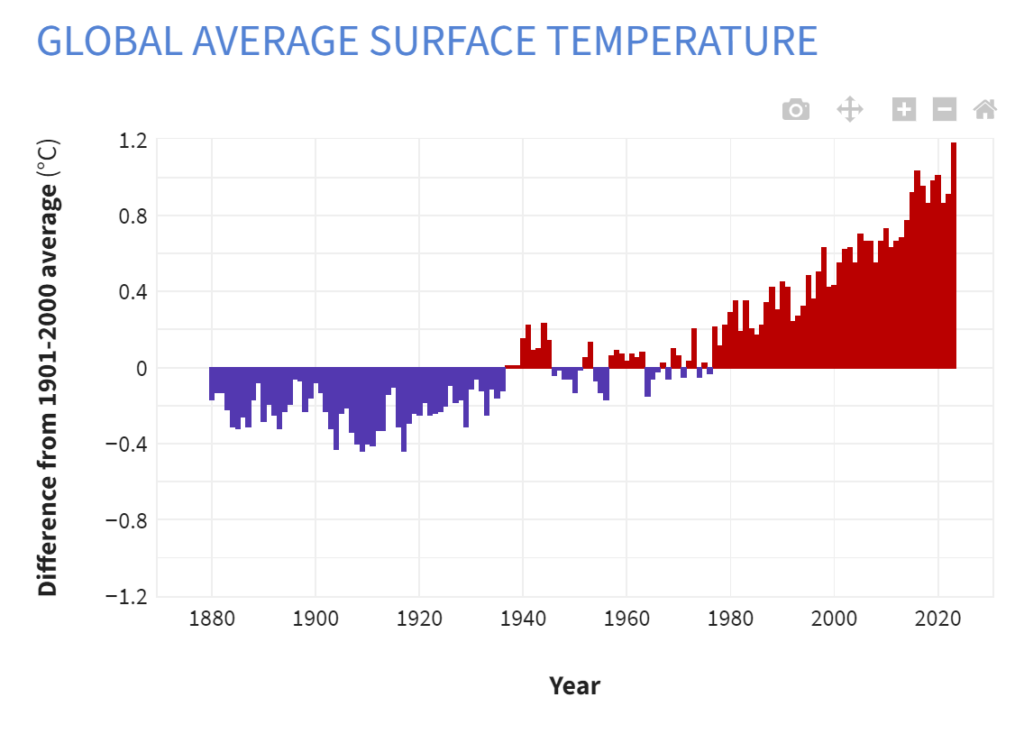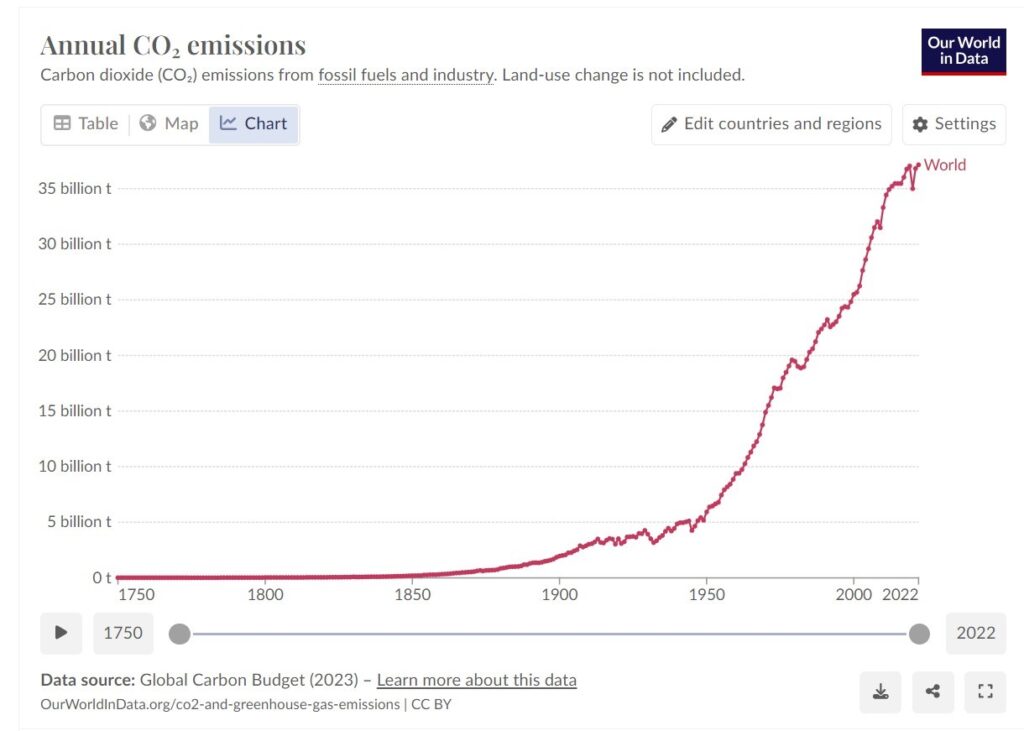- Web Desk
- 5 Hours ago
Climate change: exploring the link between carbon emissions and heatwaves
-

- Syeda Masooma
- Aug 09, 2024

“The most challenging aspect of being affected by flashflood effects is having to relocate from our homes, leaving behind everything, including furniture and personal belongings, to seek safety. This displacement is heart-wrenching…After the floodwaters recede, we return to our homes and essentially start over, repairing and rebuilding our lives as if we were refugees in our own land,” says Sabir Hussain, a resident of Nowshehra.
“My 59-year-old relative fell victim to the Karachi heatwave,” says Karachi’s resident Jamal Siddiqui. “She lived on the fourth floor of a high-rise, surrounded by other towering buildings that choked off any breeze. She couldn’t afford a generator or solar panels—just a rechargeable fan that barely held a charge due to the relentless eight to ten hours of loadshedding from K-Electric. During last year’s heatwave, that fan died in the middle of a blackout. She collapsed and was rushed to the hospital, but it was already too late.”
Karachi heatwave: 1,592 people admitted to Jinnah Hospital during last 24 hours
These are just two of the countless instances that have become an everyday reality in Pakistan over the past several years. Different in their causes, yet identical in their devastating impact. The common thread? Extreme weather.
The approximately 2-degree Fahrenheit (1 degree Celsius) increase in global average surface temperature since the pre-industrial era (1850-1900) – according to National Oceanic and Atmospheric Administration’s (NOAA) records – might appear minimal, but it signifies a substantial rise in accumulated heat.
This extra heat is driving regional and seasonal temperature extremes. Higher temperatures lead directly to more frequent heatwaves, and through melting glaciers and rising sea levels, more frequent floods. The rising global temperature also brings heavier rainfall as well as droughts. Some countries, like Pakistan, are bearing the brunt of these changes more intensely due to their specific location and geographical characteristics.

To make matters worse, trends in annual surface temperatures over recent decades (1994-2023) compared to the trend since the early 20th century (1901-2023) reveal that recent warming is much more rapid than the longer-term average, with some areas warming by 1 degree Fahrenheit or more per decade. The year 2023 was the warmest on record since 1850, being 2.12°F (1.18°C) above the 20th-century average of 57.0°F (13.9°C).

Unsurprisingly global carbon emissions follow a similar pattern to the rise in global temperatures; with a conspicuous jump in the overall number of carbon emissions. Pakistan is no exception to this trend.
Before diving into a data-driven analysis of the relationship between carbon emissions and heatwaves, let’s briefly define both terms and see why they are significant.
Heatwaves can be characterised as prolonged periods of exceptionally high surface air temperatures lasting several days. These increased temperatures cause heat stress and elevate morbidity and mortality rates when suitable adaptation strategies are lacking.
KP health department to establish climate change cell
In developed nations, substantial measures are implemented to successfully mitigate the severe impacts of extreme heat on society, the economy, and the environment. However, in developing countries, such as Pakistan, heatwaves remain insufficiently studied and result in more severe heat-related illnesses and health problems, worsened by lack of adequate coping mechanisms.
Jamal says, “Some people are in a better position to deal with climate extremities. However, for the middle- and lower middle-classes it is not always affordable. In cities like Karachi where tall buildings is the primary housing option for most people, there is no way to have access to clean air or even blowing winds, despite the presence of sea breeze. Even if the solar panels are subsidised or someone saves enough money to obtain one, the buildings house too many people with not enough roof space for a solar panel to cater to the entire building”.
Turning to carbon emissions, the World Bank defines CO2 emissions as “Carbon dioxide emissions, largely by-products of energy production and use, account for the largest share of greenhouse gases, which are associated with global warming. Anthropogenic carbon dioxide emissions result primarily from fossil fuel combustion and cement manufacturing.” It further explains, “Carbon dioxide (CO2) is a naturally occurring gas fixed by photosynthesis into organic matter. It is a byproduct of fossil fuel combustion and biomass burning and is also emitted from land use changes and other industrial processes. It is the principal anthropogenic greenhouse gas that affects the Earth’s radiative balance.”
Interestingly, CO2 is also the reference gas against which other greenhouse gases are measured, thus having a Global Warming Potential of 1. Burning of carbon-based fuels since the industrial revolution has rapidly increased concentrations of atmospheric carbon dioxide, increasing the rate of global warming and causing anthropogenic climate change. Emission intensities are also used to compare the environmental impact of different fuels or activities.
Microhydro power: lifeline amidst disasters & a blueprint for RE
Carbon dioxide is termed a greenhouse gas because it absorbs infrared radiation, warming the planet. Instead of allowing heat to radiate away, it gets trapped in the atmosphere, increasing Earth’s temperature. Before humans began burning carbon fuels, carbon dioxide made up 280 parts per million of the Earth’s atmosphere. As of May 2022, CO2 concentration is estimated at 421 parts per million.
Now put together, simply by observing the nature of CO2 emissions and heatwaves, we can see how one may lead to the other.
Now, let’s examine the mathematical models from the literature review.
A project by Global Change Impact Studies Centre (GCISC) and National Institute of Health (NIH) tabulated the historical and projected data of four major heat waves hitting sites in Pakistan: Karachi, Lahore, Multan and Peshawar. Although the mathematical details of data collection and projection are beyond this article’s scope, a glance at the graphical representation reveals a trend. (Full research article available here).




Now let’s look at Pakistan’s CO2 emissions as tabulated by the World Bank:

Examining Pakistan’s CO2 emissions in the current decade, as collected by Google’s Data Commons, shows a direct relationship between increasing heatwaves in Pakistan and the country’s CO2 emissions. While precise data points for each city or accurate future projections may not be available, it is clear that there is a direct link between the rising carbon footprint and higher instances of heatwaves. Furthermore, the causes and solutions to carbon emissions are well understood based on the data mentioned above.
In conclusion, Pakistan is facing significant challenges due to rising temperatures and climate change. These rising temperatures are causing more water scarcity, affecting agricultural production, and leading to extreme weather events such as higher number of heatwaves. Therefore, it is crucial to review our climate change goals, focusing on predicting heatwaves and planning risk reduction and adaptation strategies.
Understanding both current and future regional climate changes is essential for individuals and policymakers to plan effectively for disaster management and risk mitigation and to develop relevant local adaptation strategies.
Subsidising solar panels is not going to solve the energy crisis or prevent mortality rates due to heatwaves when there is not enough space allocated for the solar panels. Jamal believes that “the only way transition towards renewable energy will benefit the common populace of Karachi is if it is done on the level of K-Electric. The uninterrupted supply of electricity is the first step in countering the devastating impacts of constantly rising temperatures”.
Transitioning Pakistan’s CFPPs to renewable energy: what’s the hold up?
It also stands true for the floods. Sabir said, “We’ve had to adapt our coping mechanisms. Construction has shifted towards more sustainable practices, and new housing societies are being developed in safer areas. However, adapting to more intense weather patterns requires significant investments in building sustainable housing, constructing preventive barriers along the river, and sometimes relocating to safer areas. Additionally, there are increased health-related expenses due to the outbreaks of diseases following floods. All these factors have significantly increased our financial burden.”
There is also an urgent need to link the day-to-day health and wellbeing of the general populace to the long-term carbon emission reduction goals to understand climatic shifts in specific areas and to counter the negative impacts on society, economy and the environment.




